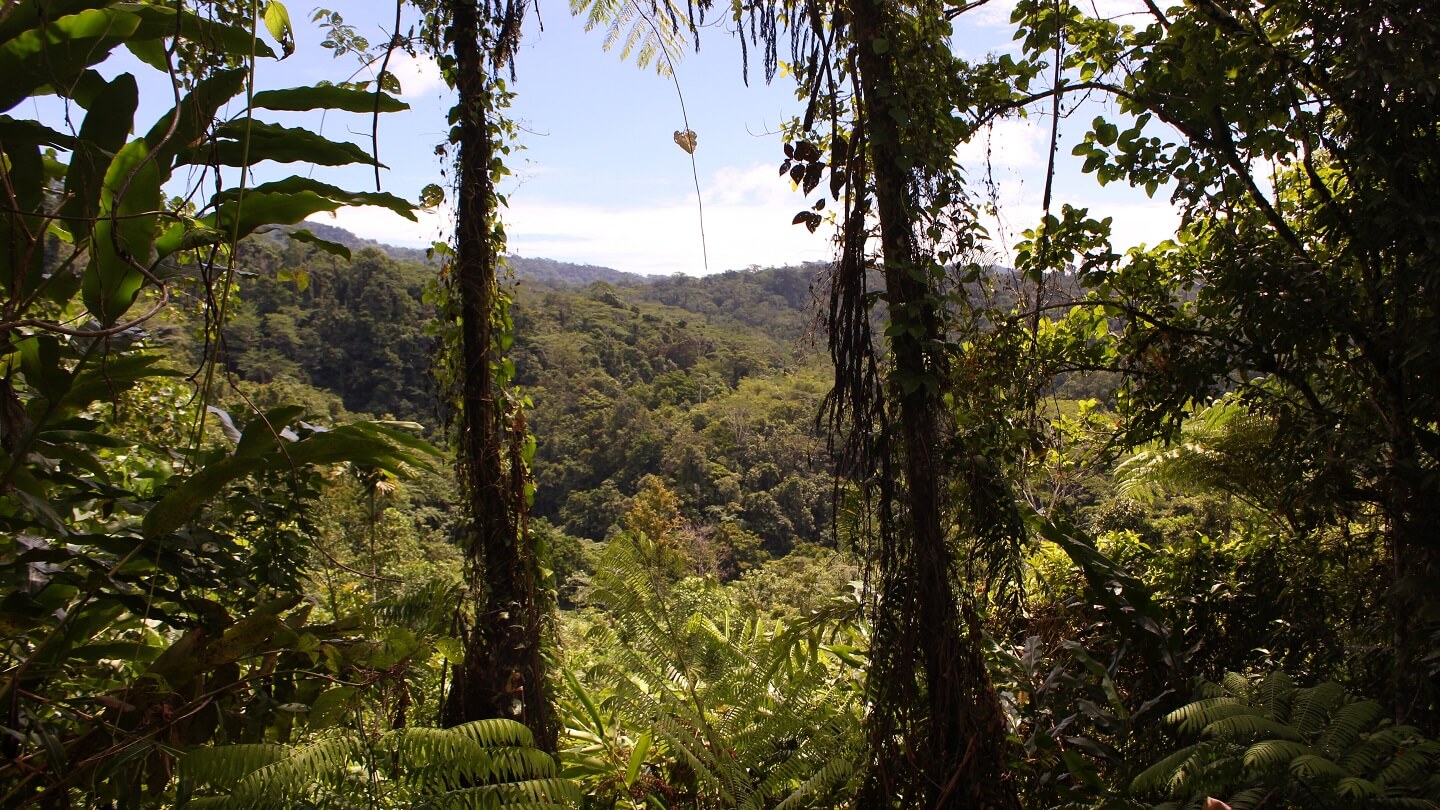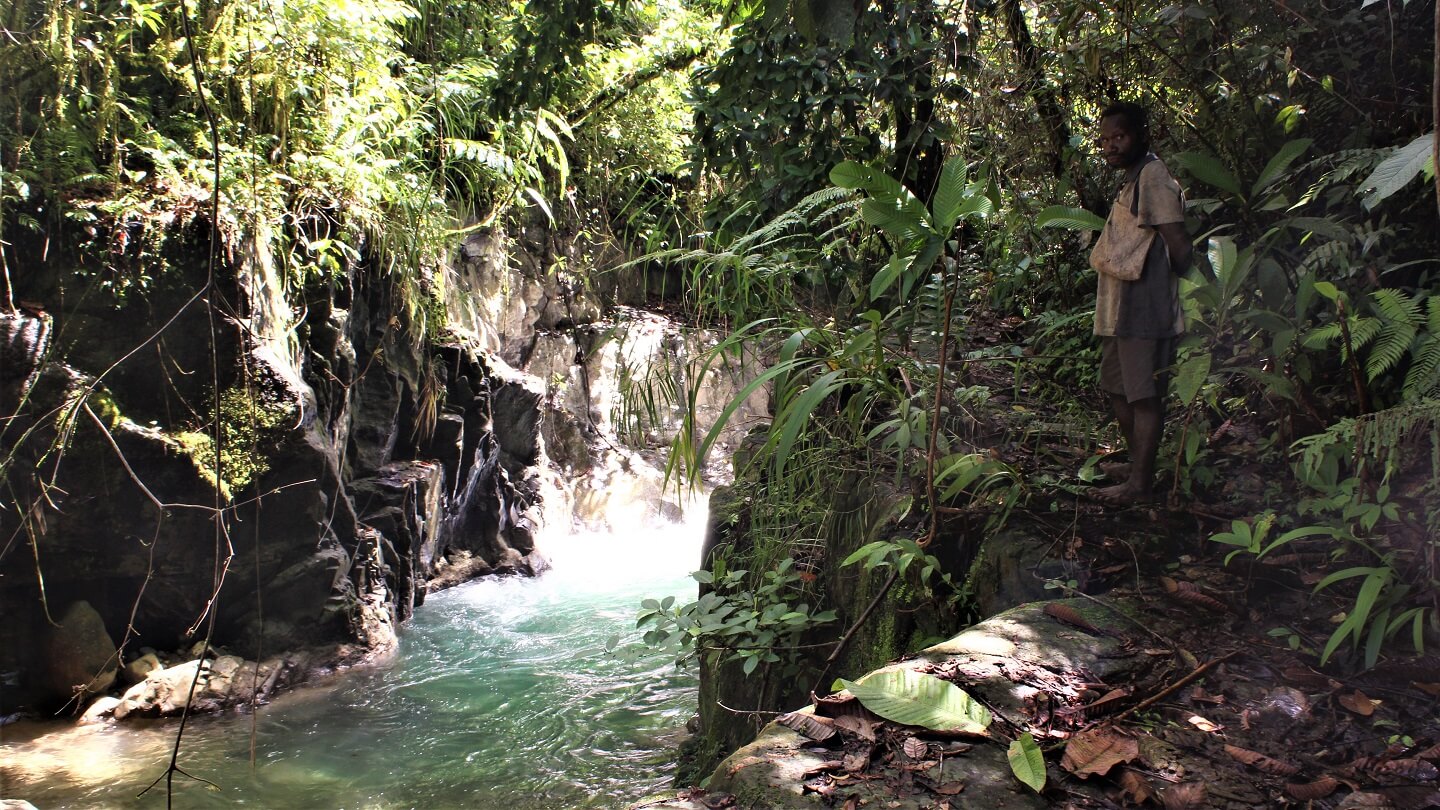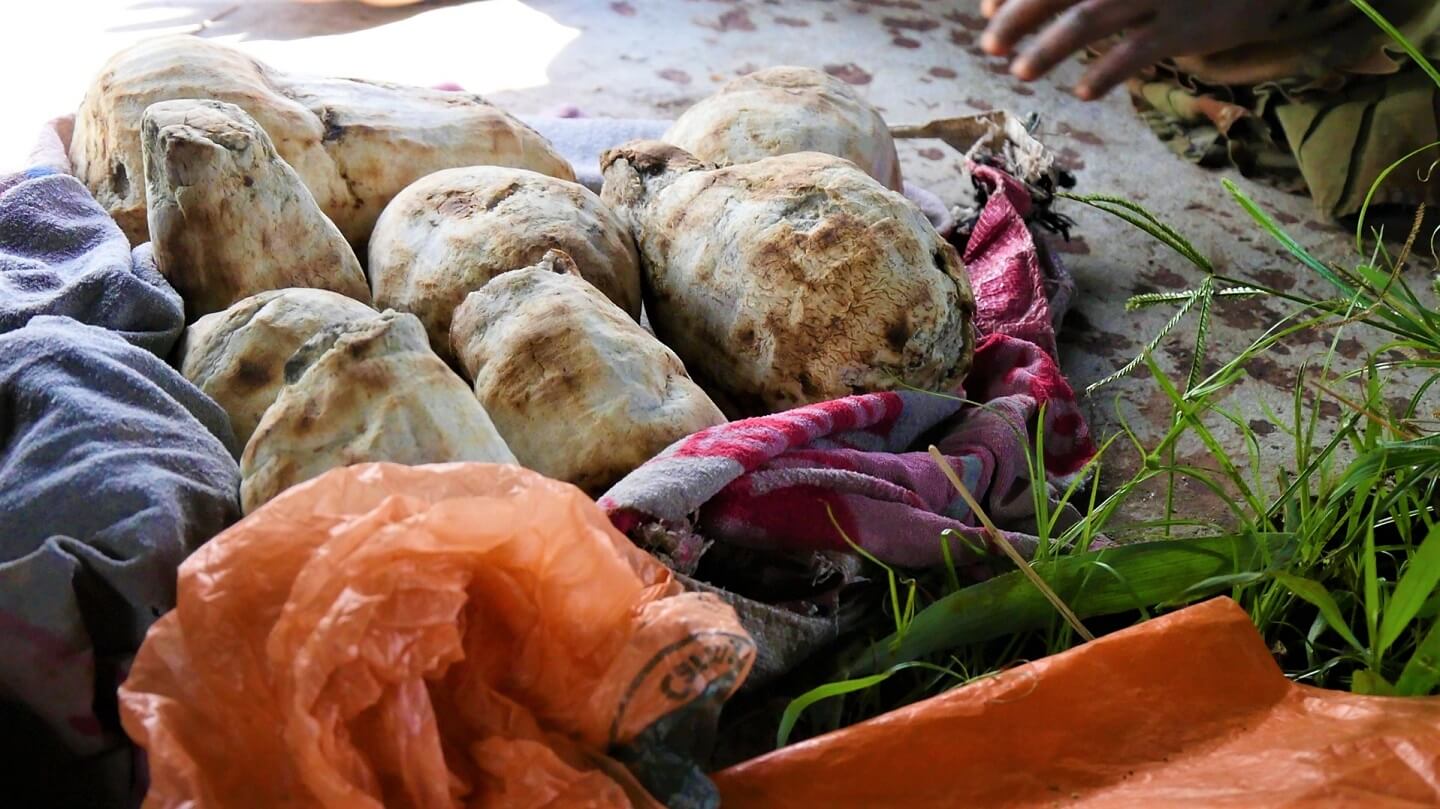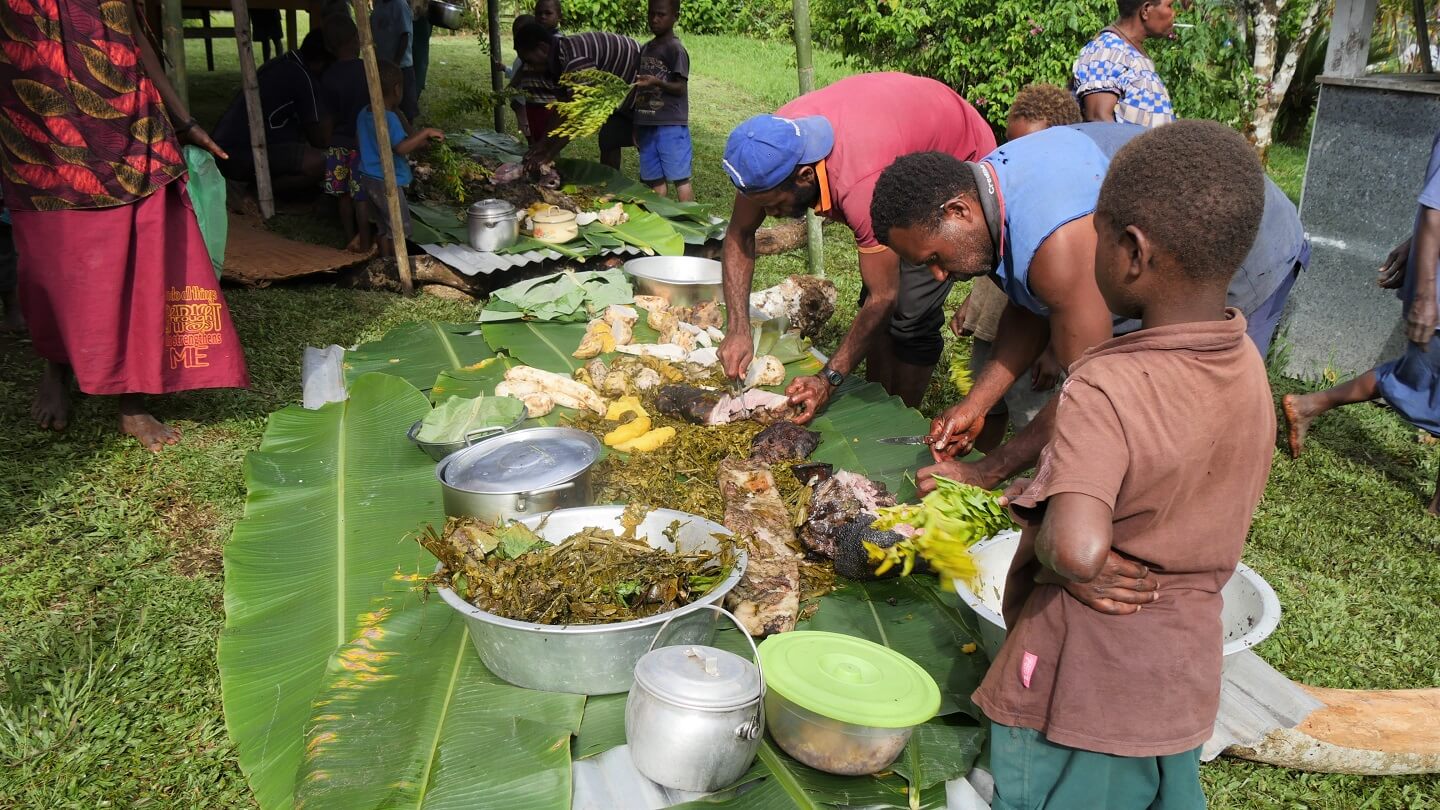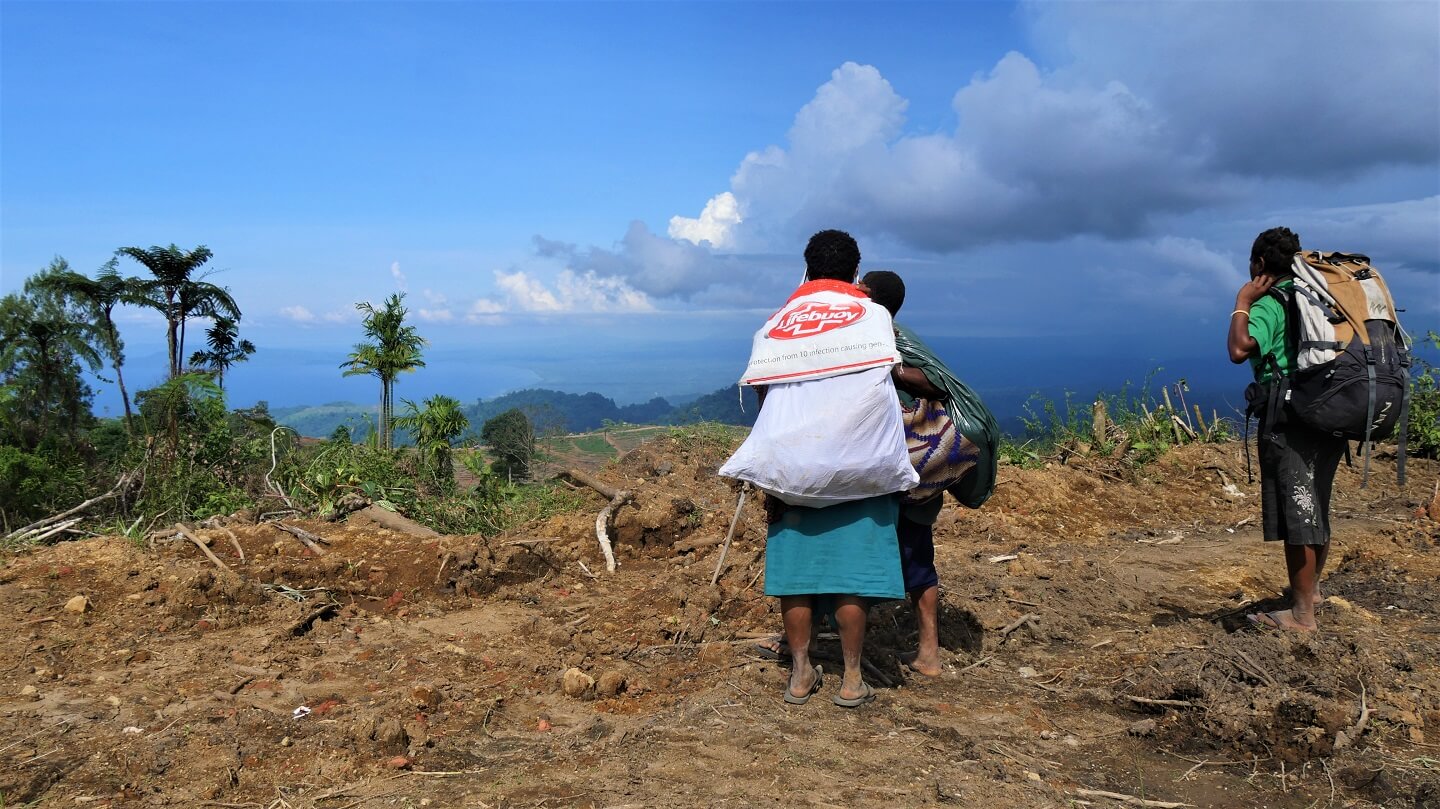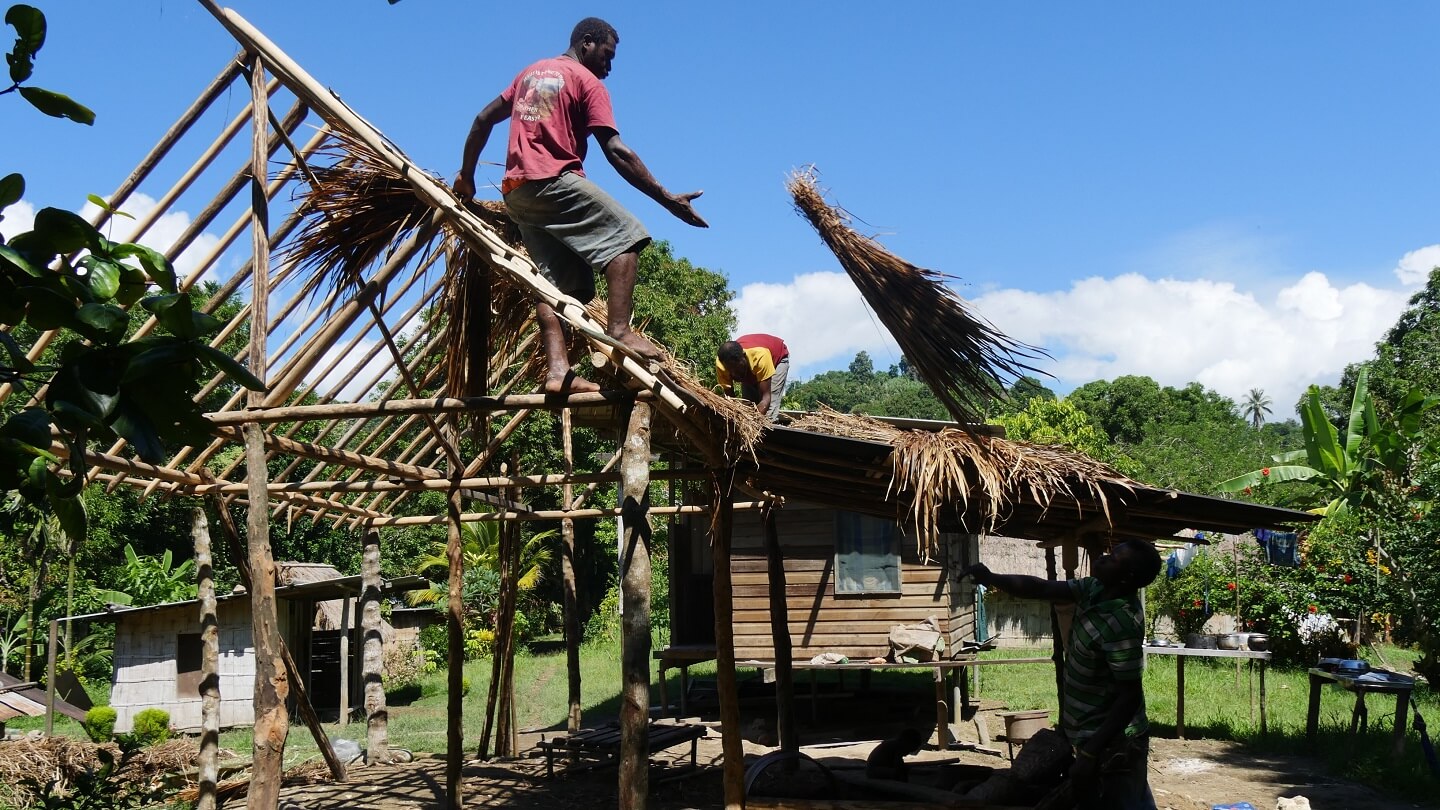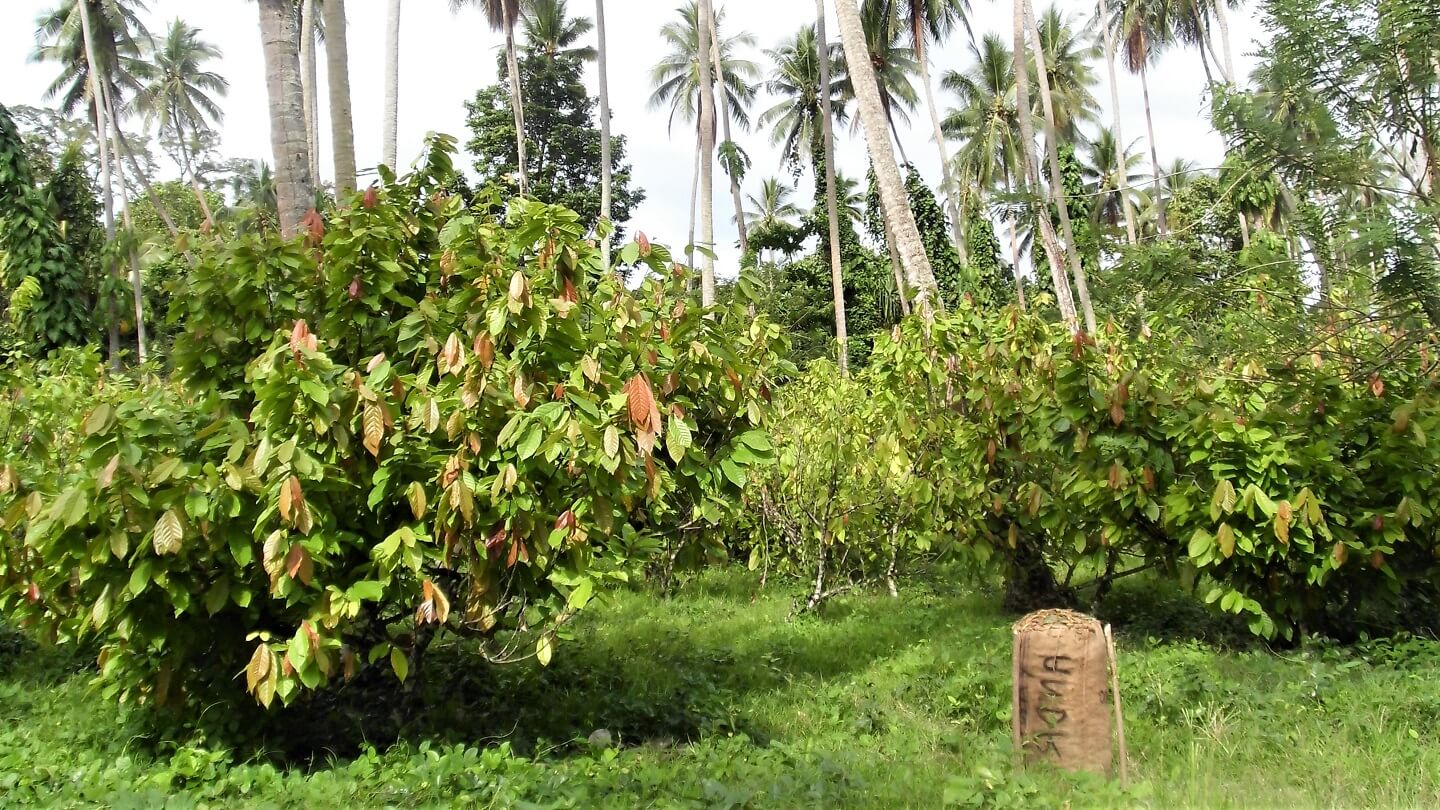Qaqet is spoken by about 15,000 people in the Gazelle Peninsula of Papua New Guinea’s East New Britain Province. Together with their relatives from the Baining language family (Mali, Qairaq, Simbali, Ura and Makolkol), the Qaqet are the original inhabitants of the peninsula – with archaeological records dating back 30,000 years and more.
In the remote and inaccessible interior, the Qaqet language and culture remain strong: Qaqet is spoken regularly, children still acquire it as their first language, and the famous Qaqet Fire Dances and Spear Dances are still being performed. Along the more accessible coast, however, the Qaqet now live together with speakers of many other languages – and it is here that Qaqet is rapidly disappearing in favor of the national language Tok Pisin.
Our project is set in both regions: in the remote interior mountains (in the neighboring villages of Raunsepna and Lamarain) and at the more accessible coast (in the village of Kamanakam).
